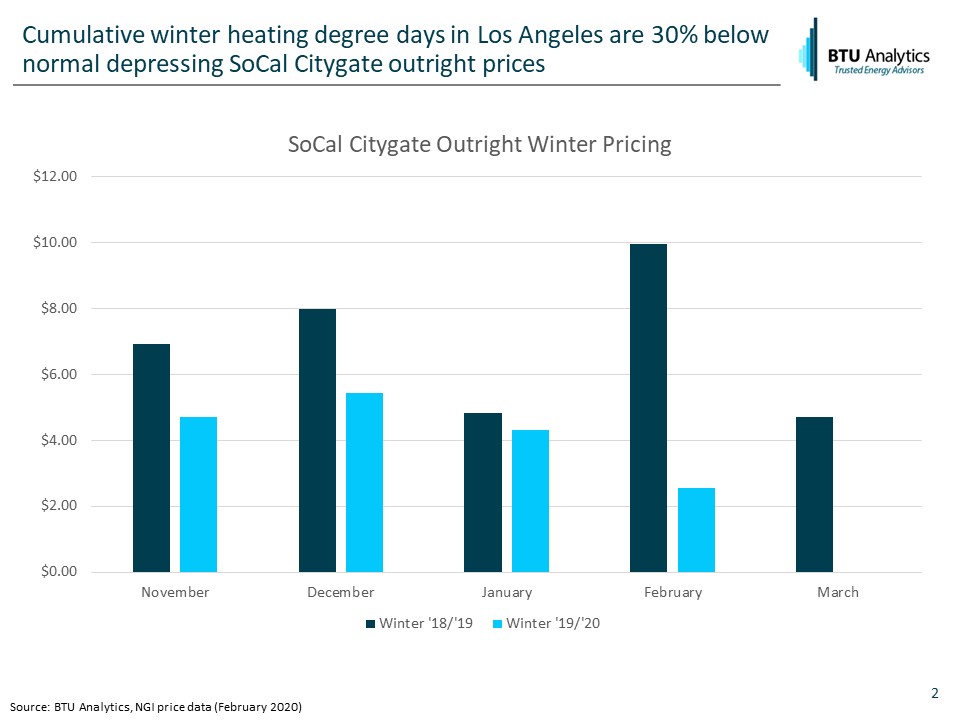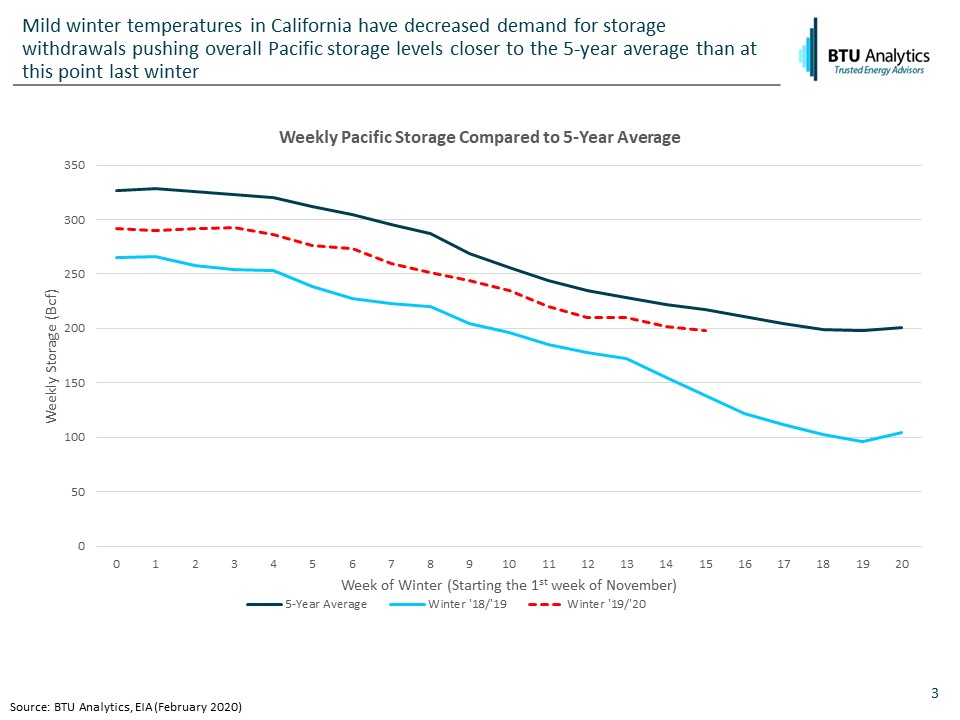Disaster averted. At least for now. With just a few weeks left to go in withdrawal season, SoCal Gas is likely breathing a sigh of relief as warmer-than-average temperatures in the region may have prevented the need to shut off “non-core” customers from natural gas service. While mild winter temperatures haven’t been kind to US storage levels or Henry Hub pricing, the Golden State may be one of the few beneficiaries of one of the warmest winters on record. However, while Southern California may emerge from this winter unscathed, peak summer demand is just around the corner, which threatens to put strain on California gas storage infrastructure once again.
In October 2019, the California Public Utilities Commission (CPUC) released their gas reliability assessment for the winter of 2019-2020. With Aliso Canyon continuing to operate at about 40% of maximum capacity, SoCal Gas treated the facility as a “last resort” in attempting to meet gas demand. However, the assessment concluded that even under a best-case scenario, a 1-in-10 peak day demand event would require withdrawals from Aliso Canyon or risk curtailing service to “non-core” customers.

Fortunately for SoCal gas customers, this winter was remarkably warm, as evidenced by looking at Heating Degree Days (HDDs) from NOAA’s Climate Prediction Center. As illustrated in the chart above, monthly HDDs in the first three months of winter averaged 12% below normal. Based on the current 7-day forecast, February is likely to continue this trend with cumulative HDDs for the month at approximately 356, 10% lower than normal. Drilling down to just Southern California shows an even more pronounced deviation. In Los Angeles, cumulative winter HDDs are 30% below normal through the end of January. This has been reflected in SoCal Citygate pricing which has been weaker all winter compared to last year.

Last February, cold temperatures and the Westcoast Outage, depleted California gas storage. The EIA’s Pacific region (of which 90% of capacity is in California) exited last winter with storage 44% below the 5-year average. Despite inventory levels building over the summer, storage levels remained 11% below the 5-year average entering the 2019-2020 winter. However, unlike last winter, the mild temperatures have caused the deficit to narrow instead of widening out. Thus, not only has California avoided a shortage this winter, it is in a better position to handle summer demand than it was at this point last year.

With California continuing to pursue aggressive climate goals, and ongoing pressure to shut down Aliso Canyon for good, Southern California is likely to continue facing gas storage constraints for the foreseeable future. Although this mild winter was able to prevent major service curtailments, for the time being, SoCal gas reliability will continue to be threatened by future years’ cold weather barring any improvements to storage infrastructure. For more on how this winter has affected natural gas storage and pricing, check out our Henry Hub Outlook.









